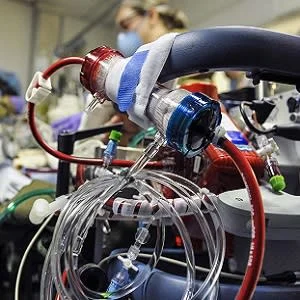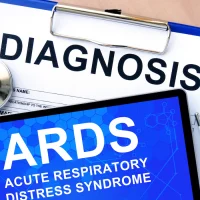Over the past decade, extracorporeal membrane oxygenation (ECMO) has become mainstream therapy in adult intensive care. Although the list of contraindications to ECMO has shrunk considerably, a few of these remain absolute, notes Dr. Graeme MacLaren in an editorial article published in the journal Critical Care.
"There are a number of circumstances outside of this list of contraindications to which ECMO could be applied but which constitute a very high-risk group with a low likelihood of success. This may be due to limited effective treatment for the underlying disease; the inherent fragility, size or age of the patient; or limitations in institutional resources and experience," writes Dr. MacLaren, Director of Cardiothoracic Intensive Care at the National University Hospital of Singapore.
The doctor cites examples of such underlying diseases including disseminated herpes simplex virus and Bortedella pertussis pneumonia in young infants, both of which are associated with in-hospital survival rates of approximately 25–30% with ECMO. He points out that some world-class institutions do not offer ECMO for children with these infections on the grounds of futility.
There are other instances when even poorer outcomes may be expected. For example, fewer than 20% of those who receive ECMO for acute respiratory failure after haematopoietic stem cell transplantation will survive to hospital discharge. "Indeed, refractory respiratory failure in the first 6 months after allogeneic bone marrow transplantation is still widely regarded as an absolute contraindication to ECMO, with survival < 5%," Dr. MacLaren explains.
For him, however, survival to hospital discharge is not the most important outcome measure, but rather "good long-term survival" — adequate neurological, psychological and functional recovery coupled to an acceptable quality of life. He also emphasises that intensive care clinicians should not regard themselves as the sole arbiters of resource allocation and thus decide who receives or is denied ECMO based on a hazy, imprecise prediction of the patient’s chances of survival coupled to a potentially misguided sense of distributive justice.
"In other words, we ought to be careful not to deny an equivocal ECMO candidate a chance at recovery only on the grounds that this might be unfair to other potential ECMO patients with a higher likelihood of survival. Such an acknowledgement should not be used to justify putting every patient indiscriminately on ECMO but neither does it support outright rejection of high-risk candidates in every instance," Dr. MacLaren writes.
Until it can be established with greater certainty what the likelihood of "good long-term survival" is by conducting comprehensive follow-up studies of ECMO patients, Dr. MacLaren says choosing to offer high-risk ECMO should be predicated on serving the patient’s best interests — i.e., to balance the benefits of attempting a heroic rescue versus the risks of providing futile care and prolonging suffering.
"If ECMO is offered to very high-risk patients, ensuring that the patient’s family as well as the entire ECMO team know why this strategy has been chosen and what the possible outcomes are may help everyone involved prepare for the worst, while they work toward and hope for the best," the editorialist says.
Source: Critical Care
Image Credit: US Air Forces Central Command
References:
MacLaren G (2018) When to initiate ECMO with low ikelihoodof success. Critical Care 22:217 https://doi.org/10.1186/s13054-018-2162-2
Latest Articles
Extracorporeal Membrane Oxygenation, intensive care, High-risk ECMO
Over the past decade, extracorporeal membrane oxygenation (ECMO) has become mainstream therapy in adult intensive care. Although the list of contraindications to ECMO has shrunk considerably, a few of these remain absolute, notes Dr. Graeme MacLaren in an










